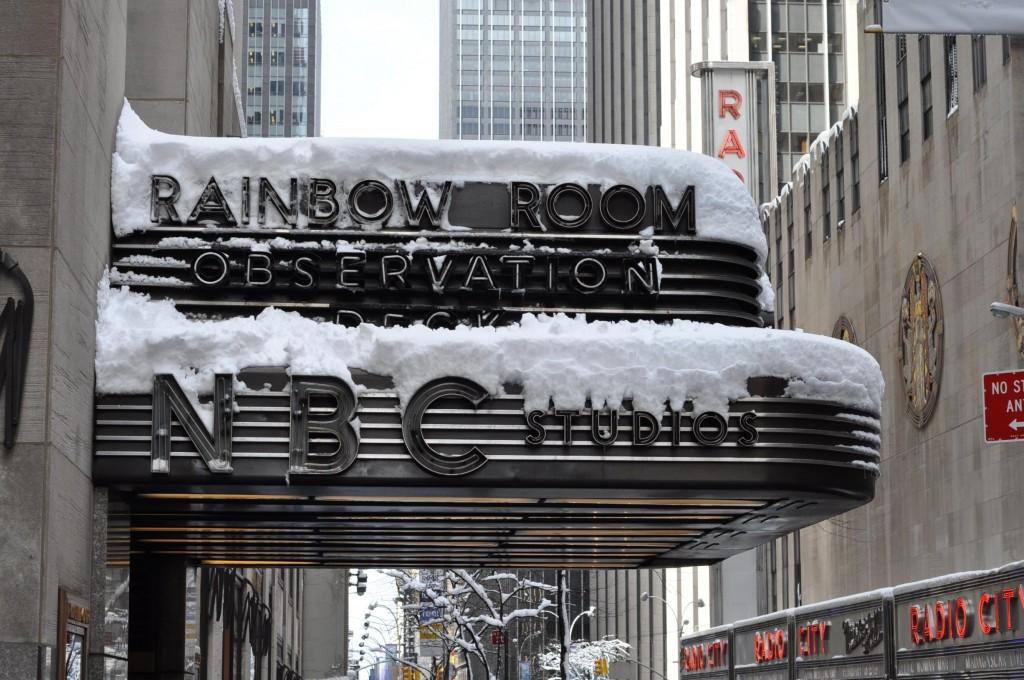Live From New York, It’s… Kind of Disappointing: The Pros and Cons of Seeing Your Favorite Shows Taped Live
July 23, 2011

Published: February 2, 2011
I’m standing in line on 11th Avenue on a 20-degree January afternoon. The wind is strong enough to be in a commercial for a sleek car, but it’s bearable since I’m about to see my first taping of “The Daily Show.”
Once inside, security forces everyone to go through tougher screening than any airport I’ve been in this year. Assistants collect gum and assign seats based on hotness and a warm-up comedian makes jokes based solely on audience members’ hometowns. Then we are “treated” to a quick 30 minutes of watching Jon Stewart be funny at a camera.
In the past four months, I’ve seen five TV shows taped live. I’ve found that most shows are like the “The Daily Show.” There’s a huge excitement leading to and during the taping, but afterward you realize that it was all basically the same show, just without commercials. People need to know more about what they’re getting before they spend hours trying to get tickets for this over-hyped experience.
Long before that cold day, I got to see a Comedy Central taping of a pilot for comedian Reggie Watts’ show, which (completely understandably if you were there to see it) never aired. This was my first peek at how TV shows are filmed, and it wasn’t pretty.
It’s not that it was a complete train wreck; the warm-up comedian was funny, and Watts’ audience asides between tapings kept us fresh as we watched the same scenes taped and re-taped. But the experience did bring to life some of the things I’d known but didn’t want to think about. Before the show even started, they had us laugh at three different levels (amusing, funny and pants-wettingly hilarious), and we went along with it. We just wanted to be part of TV.
“Late Night with Jimmy Fallon” was much more entertaining, mostly because of The Roots. While we just waited awkwardly during breaks in “The Daily Show,” The Roots kept us grooving (I know how old that sounds) even when Fallon took a 20-minute break to dry off after a sketch. Ashton Kutcher, the first guest that night, was fantastic during the show, but when the cameras turned off, he lost all his charm, which is a pretty good metaphor for TV in general.
I guess it depends a lot on the show. Jon Stewart and company have had years of experience putting together their product, so they must have the production worked out to be as efficient as possible. This might come across as cold and not that fun for the audience, but that’s just the nature of those shows. Sure they have a live audience to entertain, but more important is the audience at home, and they want the finished product, not a truly live show.
Completely different is seeing a show that doesn’t have a studio audience. As part of my internship at MSNBC, I get to watch their weekday opinion show “Morning Joe” every Wednesday. And by “watch,” I mean “catch small snippets of the show while I run around ensuring proper placement of our sponsor’s product, aka getting coffee from Starbucks.”
Still, the show’s hosts are as real in the office as they are on set. Joe Scarborough continues his loud conversations whether or not the cameras are rolling, Willie Geist makes random pop culture jokes in his spare time and Mika Brzezinski… is always Mika. Seeing them interact with guests during commercials is a chance to see important people talk without putting up a front for cameras.
“Morning Joe” doesn’t really need a studio audience, however, and the few spectators (interns and publicists) don’t take part in the show at all. Unlike Fallon and Stewart, who pump up the audience and use audience reaction in their shows, “Morning Joe” is really just a broadcasted round-table conversation. Sure it’s fun to watch them interact, but still, I could get the same thing on my HD TV while wearing my sweats and slippers.
Looking back, it probably was worth the cold to see Jon Stewart ask the audience for advice after a difficult interview, or Jimmy Fallon running around the audience after the show high-fiving everyone, even in the middle-seaters (aka ugly people). Just know that if you do manage to get tickets for Stephen Colbert after one of his hippie fans dies trying to help birth a baby whale, you might have more fun just imagining what’s on the other side of that screen.












